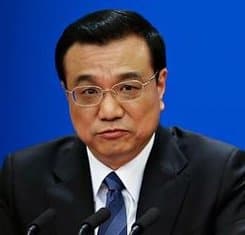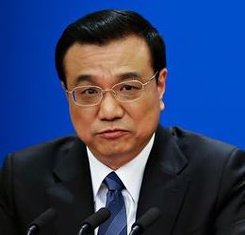China August industrial output grew by 6.9% compared to August 2013, and July’s 9% growth on a year earlier. The National Bureau of Statistics posted the slowest output growth since the financial crisis.
Economists in North America, Western Europe and Hong Kong had expected output growth of between 8% and 9% for August.
With millions of young adults entering the job market each year, China needs a high growth rate to prevent unemployment from rising.
Retail sales increased by 11.9% while fixed-asset investment during the first eight months of this year grew by 16.5%.
According to recent economic data coming out of China, it is looking less likely that Premier Li Kegiang’s 7.5% GDP growth target for 2014 is going to be met.
China’s soaring trade surplus in August was partly due to weak consumer demand at home. Despite declining commodity prices, which contributed to August’s fall in imports, analysts say domestic demand appears to be deteriorating rapidly.
If demand is weak, it must mean that the stimulus measures put in place earlier this year did not have a lasting effect.
Sales and new construction of property data released today showed further declines, with the number of mortgages awarded falling. Sales growth of steel, cement, building materials, furniture and home appliances slowed considerably.
Credit levels improved in August after falling alarmingly in July, but were still below average.

Premier Li said last week that his government is not going to rely on monetary stimulus to bolster growth. In other words, even if growth weakens, it is unlikely the Chinese government will consider any broad-based easing in the near term.
However, if weak growth persists for the months to come, the government may have no choice but to adopt a more accomodative policy.
2014 a mixed year for China so far
This has been a year of contrasting economic data coming out of China so far. First quarter GDP growth was a disappointment, while Q2’s improved after the government introduced some stimulus measures.
In July, negative data started creeping in again. August manufacturing activity was unexpectedly weak.
The Conference Board, however, published promising figures showing that China’s economic outlook was up. It’s LEI (Leading Economic Index) and CEI (Coincident Economic Index) had risen by 1.3% and 1.2% respectively. LEI looks at the near-term outlook while the CEI tells you how the economy is performing at the moment.
Analysts say that American demand for Chinese goods will likely remain strong for the rest of the year, partly because of Apple’s launch of its iPhone 6. Demand from Europe is harder to predict, given the new sanctions against Russia and probable tit-for-tat responses that are yet to come.

